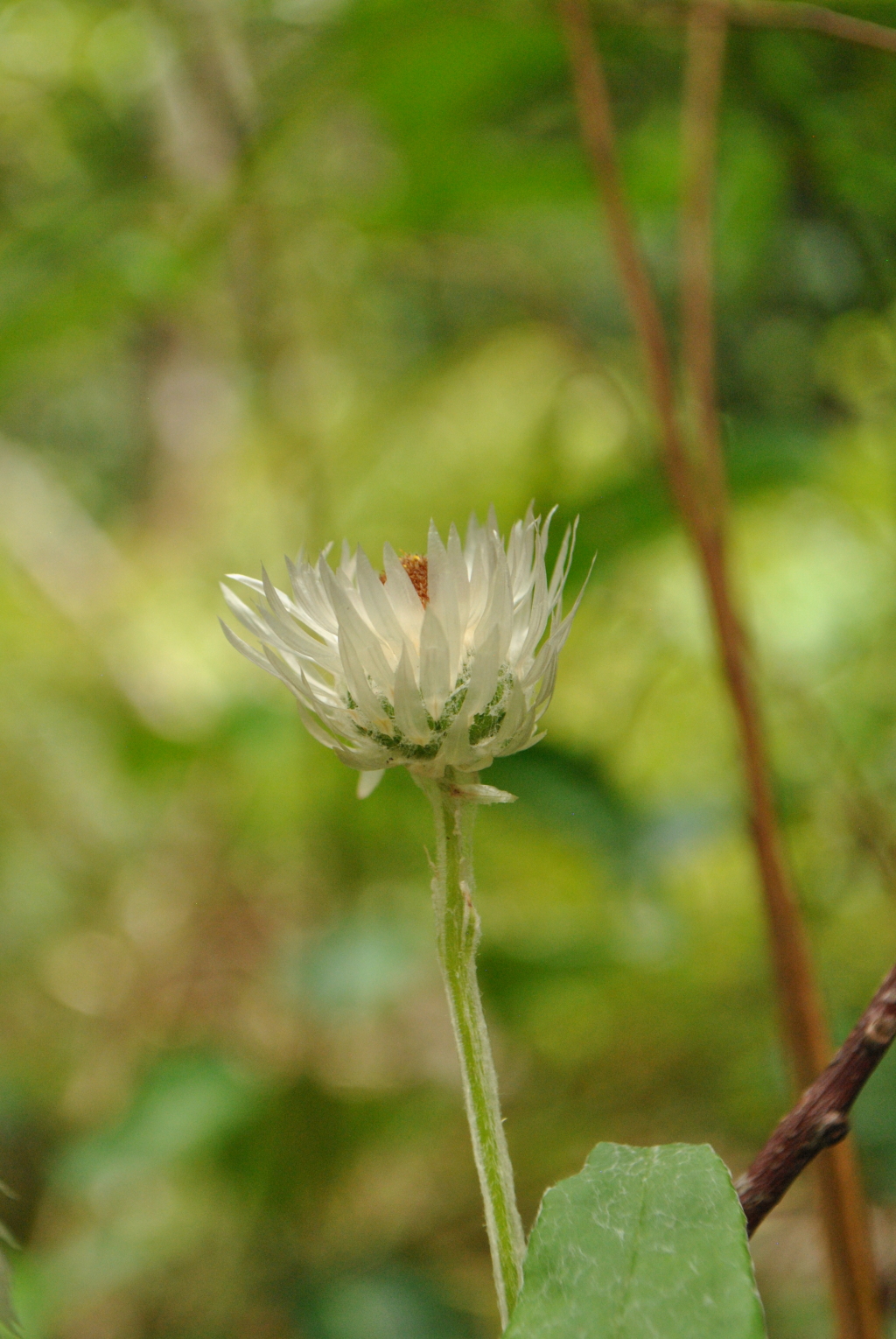Coronidium elatum subsp. elatum
Erect perennial herb or subshrub, 60–200 cm high; stems tomentose to woolly. Leaves petiolate, narrow-ovate to lanceolate, 8–12 cm long, 15–35 mm wide, acute to acuminate, margins entire or crenulate and usually woolly, upper surface glabrescent, lower surface grey- or white-tomentose to woolly. Capitula 4–8(–12) in terminal leafy corymbs, more or less hemispherical, 2–3 cm diam.; involucre 9–12-seriate; bracts white, woolly near base; intermediate bracts lanceolate, 10–15 mm long, apex often lacerate, with long narrow glandular claws. Florets all bisexual. Cypselas 2–2.5 mm long, 4-angled, glabrous, pitted, brown; pappus bristles 15–25, c. free, 7–10 mm long, white. Flowers mostly spring.
GipP, EGL, EGU, HSF, HFE. Confined in Victoria to East Gippsland where occasional in wet or dry sclerophyll forests, often along watercourses and in rocky sites. More common following fire or ground disturbance.
See note under Coronidium regarding the generic placement of this species.
Jeanes, J.A. (1999). Asteraceae. In: Walsh, N.G.; Entwisle, T.J., Flora of Victoria Vol. 4, Cornaceae to Asteraceae, pp. 652–666. Inkata Press, Melbourne.
 Spinning
Spinning
